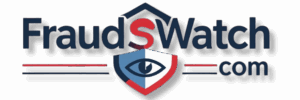The Weapon of Experience: Inside the $28M Memphis Pharmacy Fraud and a Prior Conviction at the Heart of a Record-Breaking National Takedown
A National Crisis Hits Home in Memphis
In the sprawling landscape of American healthcare, a single pharmacy in Memphis, Tennessee, has become a focal point in a story of staggering alleged deception. SarJo Pharmacy, Inc., an otherwise unremarkable local business, now stands as a key exhibit in the largest national healthcare fraud takedown in United States history. Federal prosecutors have unsealed an indictment against three individuals connected to the pharmacy—Kossie Lamon Simmons, Katina Marzie Simmons, and Tritia Margalizita Townsend—accusing them of orchestrating a massive scheme to defraud a vital government program.
The numbers are as audacious as the alleged crime itself. According to the indictment, the trio fraudulently billed the Federal Employees’ Compensation Fund (FECA) for approximately $28.7 million, ultimately receiving nearly $16.3 million in taxpayer funds for medications that were allegedly never prescribed by a doctor or dispensed to a patient. This local case, however, is but one piece of a much larger puzzle. It is part of the Department of Justice’s 2025 National Health Care Fraud Takedown, a coordinated law enforcement sweep that has resulted in charges against 324 defendants nationwide for schemes involving a record-shattering $14.6 billion in alleged false billings.
At the heart of the Memphis indictment lies a narrative that transcends simple greed. It is a story of alleged recidivism, of a system’s defenses being tested, and of a defendant who was not a newcomer to the world of healthcare fraud. Court documents reveal that one of the principal figures, Kossie Lamon Simmons, had been previously convicted of a similar crime. More chillingly, an indictment alleges he re-entered the criminal arena armed with what he purportedly called “the most valuable weapon of all EXPERIENCE”. This case, therefore, is not just about stolen money; it is about the calculated exploitation of a system designed to help injured federal workers, the potential failure of sanctions meant to prevent such a recurrence, and the monumental effort required by law enforcement to bring such complex schemes to light. This report will dissect the anatomy of the SarJo Pharmacy indictment, explore the history of its alleged architect, analyze the systemic vulnerabilities within the targeted federal program, and place this local story within the broader context of a historic national crackdown on those who would plunder America’s healthcare systems for personal gain.
The Indictment Unsealed: Anatomy of the SarJo Pharmacy Scheme
In the Western District of Tennessee, a federal grand jury returned an indictment charging the three defendants with a slate of serious felonies: one count of conspiracy to commit health care fraud and wire fraud, and seven counts of health care fraud. The charge of conspiracy under federal law is particularly potent; it does not require that the criminal objective be successfully completed, only that two or more people knowingly agreed to a plan to commit a crime and that at least one of them took an overt act to further that plan. The wire fraud statute, which criminalizes the use of interstate wires (such as electronic claim submissions) to execute a fraudulent scheme, carries a potential penalty of up to 20 years in federal prison per count.
The Alleged Mechanics
The indictment lays out a straightforward yet brazen plot. Between approximately August 2018 and December 2021, SarJo Pharmacy, Inc. allegedly engaged in a systematic campaign to defraud the Federal Employees’ Compensation Act (FECA) program. The scheme specifically targeted benefits intended for injured employees of the United States Postal Service, a large contingent of the federal workforce covered by FECA.
The fraud, as alleged by prosecutors, was built on two fundamental deceptions:
- Invalid Prescriptions: The claims submitted to FECA were for expensive medications, including compounded drugs, that were not based on valid prescriptions from authorized physicians. Instead, the indictment alleges that nurse practitioners working at an affiliated clinic, MedPartners, would determine patient eligibility for these medications, while physicians associated with the clinic never actually authorized the prescriptions.
- Phantom Billing: The medications billed to the government were allegedly never dispensed to the claimants. In fact, investigators from the Tennessee Board of Pharmacy discovered that SarJo was billing for medications it did not even carry in its inventory. This practice represents a classic “phantom billing” or “billing for services not rendered” scheme, a common tactic in healthcare fraud where providers submit claims for goods or services that patients never receive.
The Alleged Cast of Characters
The government’s indictment paints a picture of a tightly controlled family enterprise, with each defendant playing a distinct and crucial role in the alleged conspiracy.
| Defendant Name | Age | Residence | Alleged Role | Key Charges |
| Kossie Lamon Simmons | 59 | Collierville, TN | Beneficial owner; controlled and managed SarJo Pharmacy and MedPartners; submitted fraudulent claims. | Conspiracy, Health Care Fraud |
| Katina Marzie Simmons | 48 | Collierville, TN | Listed 70% owner; managed the entities; enrolled the companies in the FECA program. | Conspiracy, Health Care Fraud |
| Tritia Margalizita Townsend | 47 | Memphis, TN | Pharmacist-in-charge at SarJo Pharmacy, providing the necessary license for operation. | Conspiracy, Health Care Fraud |
Kossie Simmons is depicted as the operation’s mastermind, the “beneficial owner” who allegedly directed the scheme from behind the scenes. Katina Simmons, his wife, served as the face of the company, the listed 70% owner who handled the official paperwork to enroll the entities as federal healthcare providers. Tritia Townsend, as the licensed pharmacist-in-charge, allegedly lent the operation its veneer of legitimacy, as her credentials were required for the pharmacy to legally exist and dispense medication.
The structure of the enterprise itself appears to be a critical component of the alleged fraud. Kossie Simmons was convicted of healthcare fraud in 2007 and, as a result, was excluded from participating in any federal healthcare program for 25 years. Such an exclusion order is a powerful administrative tool designed to prevent known fraudsters from having another opportunity to steal from taxpayers. His direct ownership or management of a pharmacy billing a federal program like FECA would have been illegal and would have immediately triggered red flags.
The indictment suggests that the defendants circumvented this barrier through a “nominee” or “straw owner” arrangement. By listing Katina Simmons as the majority owner on official documents, the enterprise could pass initial screenings that may not have looked deeper into the true control and beneficial ownership of the company. This arrangement implies that the scheme was not merely an act of fraudulent billing but a calculated conspiracy designed from its inception to defeat a specific regulatory safeguard. The very structure of the business was arguably an act of deception, created to conceal the involvement of a legally prohibited individual and allow him to allegedly perpetrate a second, larger fraud against the U.S. government.
“The Most Valuable Weapon of All”: A History of Deception
The current indictment against Kossie Lamon Simmons is not his first encounter with the federal justice system. In 2007, he pleaded guilty to and was sentenced for health care fraud under 18 U.S.C. § 1347. That earlier case involved a fraudulent scheme that caused a loss to healthcare programs of between $1 million and $2.5 million. Simmons was identified as a leader of that criminal activity. For his role, he was sentenced to 23 months in prison and ordered to pay $1,858,467 in restitution.
Beyond the prison sentence and financial penalty, the government imposed a critical administrative sanction: a 25-year exclusion from participating in all federal healthcare programs. This debarment is one of the most severe civil tools available to regulators, intended to erect a firewall between proven fraudsters and taxpayer-funded programs like Medicare, Medicaid, and FECA. The SarJo Pharmacy indictment alleges that Simmons flagrantly violated this ban.
What elevates this case from a standard story of recidivism is the alleged mindset of its central figure. The indictment contains a stunning piece of evidence: a text message allegedly sent by Kossie Simmons to an unnamed co-conspirator in August 2016, just as the new ventures were being established. He purportedly wrote:
“Been patiently waiting for the planets to come back into alignment from my first go round, now can attack this opportunity with the most valuable weapon of all EXPERIENCE”.
This alleged statement provides a rare and chilling window into the thinking of a serial fraudster. A line-by-line deconstruction reveals a calculated and unremorseful perspective:
- “Been patiently waiting” suggests that the period after his first conviction was not a time of rehabilitation but a waiting game. It implies premeditation and a long-term intent to return to the same type of criminal activity.
- “First go round” frames his prior conviction and imprisonment not as a deterrent or a lesson learned, but as a mere practice run—a preliminary attempt from which to draw knowledge.
- “The most valuable weapon of all EXPERIENCE” is the most damning phrase. It recasts criminal expertise—understanding the intricacies of billing codes, the loopholes in program oversight, and the methods for structuring fraudulent entities—as a strategic asset. Instead of remorse, there is a declared intent to leverage past criminal knowledge to execute a more effective and sophisticated fraud in the future.
The Simmons case serves as a stark illustration of the potential limitations of administrative sanctions when they are not supported by continuous and rigorous verification. The 25-year exclusion order was a powerful legal instrument on paper, but it was allegedly rendered impotent by the simple tactic of using a family member as a nominee owner. The FECA program’s gatekeeping checks were likely focused on the name listed on the enrollment application—Katina Simmons—rather than performing the deeper due diligence required to uncover beneficial ownership and familial ties to an explicitly excluded individual. This reveals a critical gap between the intent of the sanction and its practical enforcement. It is a vulnerability that sophisticated and determined actors, armed with “experience,” can exploit to re-infiltrate and defraud the very systems that have already cast them out.
The Target: How Fraudsters Exploit the Federal Employees’ Compensation Act (FECA)
The Federal Employees’ Compensation Act, first established in 1916, is the workers’ compensation system for the entire civilian workforce of the U.S. federal government. It provides a spectrum of benefits—including medical care, wage replacement, and survivor payments—to employees in the executive, legislative, and judicial branches who are injured or fall ill in the performance of their duties. The program is non-adversarial and intended to be remedial, providing a crucial safety net for public servants. Among the millions covered are employees of the U.S. Postal Service, the specific population of claimants allegedly targeted in the SarJo Pharmacy scheme.
Vulnerabilities in the System
While essential, the FECA program, particularly its medical benefits component, has been identified by the Department of Labor’s Office of Inspector General (DOL-OIG) as a system highly vulnerable to fraud, waste, and abuse. The SarJo scheme appears to have exploited two of the most well-documented weaknesses.
First is the historical problem of compounded drugs. In the middle of the last decade, federal investigators uncovered a massive surge in fraudulent billing related to these custom-mixed medications, especially pain and scar creams. Spending on compounded drugs within FECA skyrocketed from approximately $2 million in Fiscal Year 2011 to an astonishing $256 million in Fiscal Year 2016. This explosion was fueled by schemes in which pharmacies, often in collusion with prescribing physicians, would bill FECA for exorbitant amounts. In some cases, creams that cost about $15 to produce were billed to the government for as much as $16,000 per prescription. The indictment against SarJo, which alleges the business billed for compounded medications created using drug ingredients “tailored to the needs of an individual patient,” fits squarely within this fraudulent pattern.
Second, the scheme directly mirrors another major vulnerability flagged by the DOL-OIG: billing for services not rendered. The allegation that SarJo Pharmacy billed for millions of dollars in medications that it never stocked or dispensed represents one of the most fundamental and audacious forms of healthcare fraud. It requires no complex medical justification, only a willingness to submit entirely fabricated claims.
The “7 Degrees of FECA Fraud”
To better understand the severity of the alleged SarJo scheme, it is useful to place it within a framework developed by fraud investigation experts that categorizes FECA fraud into seven “degrees” of intent and complexity. These range from low-level “Incremental Fraud,” where a claimant occasionally exceeds their physical restrictions, to more deliberate forms of deception.
The allegations against the Simmonses and Townsend place their scheme firmly in the highest and most severe tiers of this framework:
- Flagrant Fraud: This category describes claimants or providers who blatantly engage in activities that contradict their claims. Billing for millions of dollars in medication that was never even in the pharmacy’s inventory is a textbook example of flagrant, undisguised deception.
- Conspired Fraud: This is the most egregious form of fraud, involving a deliberate and pre-planned scheme to fabricate claims from the ground up. The indictment alleges a multi-year conspiracy involving multiple individuals with defined roles, a precursor clinic, and a business structure designed to conceal the involvement of a debarred individual. This points directly to a conspired effort to defraud the government, questioning the legitimacy of the entire enterprise from its inception.
By classifying the alleged SarJo scheme in this way, its gravity becomes clear. This was not an opportunistic or exaggerated claim; it was, according to prosecutors, a calculated, high-level criminal conspiracy designed for maximum financial extraction from a taxpayer-funded program.
The National Takedown: A Record-Breaking Show of Force
While the SarJo Pharmacy case represents a significant alleged fraud in its own right, its true scale is understood only when viewed as part of the broader law enforcement action it belongs to: the 2025 National Health Care Fraud Takedown. This coordinated operation, led by the Department of Justice, represents the single largest enforcement action against healthcare fraud in U.S. history, both in terms of financial scope and the number of individuals charged.
Unprecedented Scale
The statistics from the takedown are staggering and paint a vivid picture of a nationwide battle against deeply entrenched criminal networks. The operation’s success was built on a massive collaborative effort involving the DOJ’s Criminal Division, more than 50 U.S. Attorneys’ Offices, and federal and state law enforcement partners including the FBI, Drug Enforcement Administration (DEA), Health and Human Services Office of Inspector General (HHS-OIG), and the Department of Labor Office of Inspector General (DOL-OIG).
| Metric | Figure |
| Total Defendants Charged | 324 |
| Licensed Medical Professionals Charged | 96 |
| Alleged Fraudulent Billings | > $14.6 Billion |
| Assets Seized (Cash, Vehicles, Crypto, etc.) | > $245 Million |
| Fraudulent Payouts Prevented by CMS | > $4 Billion |
The total alleged fraud of over $14.6 billion more than doubles the previous record of $6 billion from a prior takedown, highlighting the escalating nature of these crimes. The seizure of over $245 million in assets demonstrates a key part of the government’s strategy: to strip criminals of their ill-gotten gains. Furthermore, the proactive work of the Centers for Medicare & Medicaid Services (CMS), which prevented over $4 billion in fraudulent claims from being paid and revoked the billing privileges of 205 providers, shows a critical shift towards preventing fraud before it occurs, not just prosecuting it after the fact.
A Multi-Front War on Fraud
The 2025 Takedown targeted a wide array of fraudulent schemes, revealing the diverse and evolving tactics used by criminals to exploit the U.S. healthcare system. Beyond the pharmacy fraud seen in the Memphis case, major enforcement actions included:
- Transnational Criminal Organizations: In the largest single action, charges were brought against individuals involved in “Operation Gold Rush,” a $10.6 billion scheme to fraudulently bill Medicare for durable medical equipment (DME) like urinary catheters. The organization allegedly used stolen identities of over one million Americans and laundered proceeds through cryptocurrency and shell companies abroad.
- Fraudulent Wound Care: Seven defendants, including five medical professionals, were charged in a $1.1 billion scheme involving medically unnecessary amniotic wound allografts, often applied to vulnerable elderly patients in hospice care.
- Prescription Opioid Trafficking: In a direct assault on the opioid crisis, 74 defendants, including 44 licensed medical professionals, were charged in connection with the illegal diversion of over 15 million opioid pills to the black market.
- Telemedicine and Genetic Testing Fraud: Reflecting the changing landscape of healthcare, 49 defendants were charged in schemes totaling over $1.17 billion related to fraudulent claims for telemedicine consultations and medically unnecessary genetic tests.
The Memphis case, with its focus on the FECA program, is one of 170 additional cases in the takedown that targeted various other schemes involving over $1.84 billion in false claims to Medicare, Medicaid, and private insurers. Together, these actions underscore the pervasive nature of healthcare fraud and the comprehensive, multi-agency resolve required to combat it.
A Playbook for Deception: Common Pharmacy Fraud Schemes
The SarJo Pharmacy indictment serves as a real-world case study for several classic methods of pharmacy fraud. Understanding these common schemes provides crucial context for the allegations in Memphis and illuminates the broader challenges facing regulators and law enforcement.
Detailed Scheme Breakdown
- Phantom Billing: This is the cornerstone of the alleged SarJo scheme. Phantom or fictitious billing occurs when a pharmacy submits claims for prescriptions that were never actually dispensed. This can involve billing for non-existent patients, but more often, as alleged here, it involves using the information of real, eligible beneficiaries to bill for medications they never requested or received. The discovery by the Tennessee Board of Pharmacy that SarJo was billing for drugs it didn’t even stock is the most direct evidence of this type of fraud.
- Illegal Kickbacks and Collusion: While the SarJo indictment does not explicitly charge a kickback violation, the alleged operational structure suggests a highly collusive environment. Federal law, including the Anti-Kickback Statute, prohibits paying or receiving anything of value to induce the referral of federal healthcare business. Common schemes involve pharmacies paying doctors to prescribe high-margin drugs or refer patients exclusively to them. In the SarJo case, the affiliated clinic, MedPartners, was allegedly where nurse practitioners—not independent physicians—determined eligibility for the very compounded medications the pharmacy would then bill for, suggesting a closed loop designed to generate fraudulent claims rather than address legitimate patient needs.
- Drug Switching: A prevalent form of pharmacy fraud involves dispensing a different medication than the one prescribed to maximize profit. This can mean dispensing a cheap generic drug while billing the government for the expensive brand-name equivalent, or even switching between tablet and capsule forms of the same drug if one has a higher reimbursement rate.
- Auto-Refilling Fraud: Some pharmacies engage in schemes where they continue to automatically refill and bill government programs for prescriptions that patients no longer need, have stopped taking, or fail to pick up. The pharmacy pockets the reimbursement and can then resell the unclaimed medication, effectively getting paid twice for the same product.
The Role of Pharmacy Benefit Managers (PBMs)
While not directly implicated in the SarJo case, no discussion of modern pharmacy fraud is complete without understanding the role of Pharmacy Benefit Managers (PBMs). These powerful corporate entities act as intermediaries, managing prescription drug benefits for health plans, large employers, and government programs like Medicare Part D. They use their massive scale to negotiate prices with drug manufacturers and create networks of pharmacies.
However, their position as middlemen creates opportunities for opaque and fraudulent practices. Common PBM-related fraud schemes include:
- Spread Pricing: A PBM charges a health plan a higher price for a drug than it reimburses the pharmacy, pocketing the difference or “spread” as undisclosed profit.
- Rebate Retention: PBMs negotiate large rebates from drug manufacturers in exchange for giving a drug favorable placement on a formulary (the list of covered drugs). Fraud occurs when these rebates are not fully passed on to the government programs as required by law, but are instead retained by the PBM.
- Formulary Manipulation: PBMs may make formulary decisions based on which manufacturer offers the biggest kickback or rebate, rather than on clinical efficacy or cost-effectiveness for the patient and the health plan.
These complex schemes drive up costs for taxpayers and can compromise patient care, making PBMs a growing focus for government fraud investigators.
The Scales of Justice: Consequences and the Path to Prosecution
It is a bedrock principle of the American legal system that an indictment is merely an allegation. All defendants, including Kossie Simmons, Katina Simmons, and Tritia Townsend, are presumed innocent until proven guilty beyond a reasonable doubt in a court of law [User Query]. Should the government meet this high burden of proof, however, the defendants face severe consequences that underscore the gravity with which the justice system treats the theft of taxpayer dollars.
Potential Penalties
The charges in the indictment carry the potential for lengthy prison sentences and crippling financial penalties. Each count of conviction can result in a separate sentence, which the court may order to be served consecutively.
| Charge | U.S. Code Statute | Maximum Prison Sentence (per count) | Maximum Fine (per count) |
| Conspiracy to Commit Wire & Health Care Fraud | 18 U.S.C. § 1349 | 20 years | $250,000 |
| Health Care Fraud | 18 U.S.C. § 1347 | 10 years | $250,000 |
The prosecution of this case is being handled by a specialized team, reflecting its complexity and importance. The government’s legal team includes Trial Attorney Sara Porter of the Gulf Coast Health Care Fraud Strike Force and Assistant United States Attorney Raney Irwin of the U.S. Attorney’s Office for the Western District of Tennessee. The involvement of a Strike Force attorney signifies that this case is part of a targeted, data-driven national effort to combat the most egregious healthcare fraud schemes.
Beyond incarceration, the financial penalties in such cases are designed to be comprehensive and devastating to the criminal enterprise. The government’s approach to punishment is multi-pronged, aiming not just to penalize but to ensure that crime does not, in any way, pay. This financial assault consists of three main components:
- Restitution: This is a mandatory payment to the victim to make them whole. In this case, if the defendants are convicted, they would likely be ordered to pay back the full amount the FECA program lost, which totals approximately $16.3 million.
- Criminal Fines: These are punitive payments made to the government, separate from restitution. As shown in the table, these fines can reach $250,000 per count of conviction.
- Asset Forfeiture: This powerful tool allows the government to seize any and all property and proceeds derived from the criminal activity. This could include bank accounts, real estate, luxury vehicles, or any other assets purchased with the fraudulent funds. In similar large-scale pharmacy fraud cases, courts have ordered forfeitures reaching hundreds of millions of dollars.
This combination of restitution, fines, and forfeiture is designed to dismantle the financial infrastructure of the fraud and remove any economic incentive for committing the crime in the first place. For many white-collar offenders, this comprehensive financial ruin can be as powerful a deterrent as the threat of prison.
Conclusion: A Sobering Reminder of a Pervasive and Evolving Threat
The indictment of three West Tennessee residents in the SarJo Pharmacy case is more than a local crime story; it is a microcosm of a national crisis. It weaves together the threads of alleged individual audacity, the exploitation of systemic vulnerabilities, and the massive, coordinated power of a federal government determined to protect its programs and taxpayers. The alleged mindset of one defendant—viewing a prior conviction not as a warning but as “experience” to be weaponized—serves as a chilling reminder that the motivations behind such crimes can be deeply entrenched and devoid of remorse.
The case shines a harsh light on the persistent weaknesses within vital government programs like the Federal Employees’ Compensation Act. The very systems designed to provide a lifeline to injured workers can become lucrative targets for those who learn to manipulate their complexities. The alleged ease with which a 25-year debarment was circumvented highlights the urgent need for more robust verification and continuous monitoring to enforce the sanctions already in place.
At the same time, the SarJo case’s inclusion in the 2025 National Health Care Fraud Takedown stands as a testament to the formidable response of law enforcement. The historic scale of the takedown—$14.6 billion in alleged fraud, 324 defendants, and a vast coalition of federal and state agencies—sends an unequivocal message that these crimes will not be tolerated. As Attorney General Pamela Bondi stated, “This record-setting Health Care Fraud Takedown delivers justice to criminal actors who prey upon our most vulnerable citizens and steal from hardworking American taxpayers”.
Ultimately, the battle against healthcare fraud is a continuous and evolving conflict. As criminals employ more sophisticated corporate structures, leverage new technologies, and operate across national borders, the agencies tasked with stopping them must do the same. The ongoing fight requires constant vigilance, innovation in data analytics to detect anomalies, and the unwavering prosecutorial resolve seen in this national effort. The integrity of America’s healthcare systems, and the taxpayer funds that support them, depend on nothing less.




